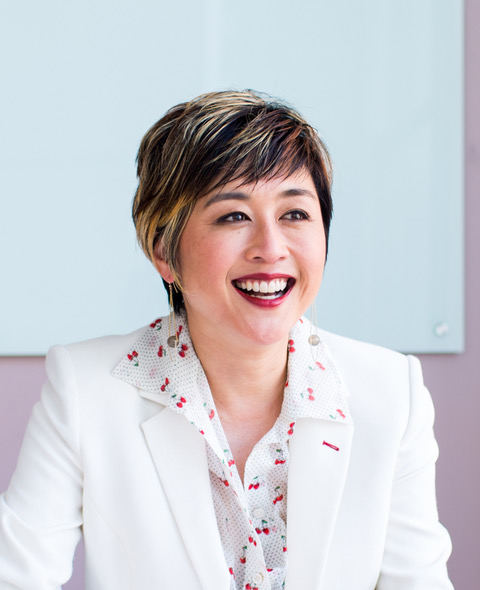
Now that the value of company culture is widely recognized in workplaces, it’s time to take people strategies to the next level. The next metamorphosis we need is to value individuals as their authentic, whole, and purposeful selves. You may choose to use different terms to mean the same thing, such as well-being, psychological safety, mental health, self-care, ikigai in Japanese, and hygge in Danish. In the end, it all comes back to doing the most important work in our lives— nurturing our own greenhouse.
Basically, we need to keep two questions top of mind:
- What’s in it for ME?
- What’s in it for all (WE/COMMUNITY)?
By starting with ME, you know you’re taking care of your greenhouse.
By responding to them both, you ensure that everyone’s greenhouse is benefiting in coexisting and symbiotic ways.
By following the greenhouse model outlined in Part I, you can answer “What’s in it for ME?” You’ll need to define your Purpose + Values and monitor whether your greenhouse conditions are being met. This way you’ll know which conditions are at their peak and which ones need help improving.
Many of us forget to tend our own greenhouses because we feel the need to tend everyone else’s greenhouse first. We wake up exhausted because one of the kids has a cold, which means we forgot to feed the pets, which reminds us that we forgot to do that important favor for our best friend last week, as we can hear the chimes of texts and emails already going off (even if that’s just in our heads). And that’s all happened before we get to the bathroom to brush our teeth. Who has time for a quick stretch, meditation, or workout when it feels like hell’s about to have a party in the house if we don’t start getting stuff done?
Tending your own greenhouse is where happiness and humanity happen – and there’s much more to it than making time for a daily meditation or workout.
The repercussions of not doing it are heartbreaking. Here are just a few things that describe the state of our MEs in the world and our workplaces:
- Depression and suicide are increasing at staggering rates. The World Economic Forum (WEF) says depression is the number one cause of ill health and disability worldwide: “More than 300 million people worldwide suffer from depression, an increase of more than 18% between 2005 and 2015.” Much of the blame for depression and poor mental health falls on the experiences employees have in US workplaces. In 2019, for the first time, our mental health crisis was on the agenda at the WEF’s annual meeting in Davos, Switzerland (note that this was even before the pandemic).
- Higher levels of economic hardship have increased relationship violence and psychological distress.
- Employed workers are three times as likely to report poor mental health now than before the pandemic.
- Burnout and turnover increase and productivity decrease when basic physical and emotional needs aren’t acknowledged and addressed. A recent Gallup study showed that nearly eight in ten people experience burnout on the job. When we do, we’re 63 percent more likely to take a sick day, 23 percent more likely to visit the emergency room, and 2.6 times more likely to be actively seeking a different job.
- Income disparity is growing between the haves and have-nots. America’s top 10 percent average more than nine times the income of the bottom 90 percent. The top 1 percent average 39 times more.
At the same time, I’ve been witnessing how leaders are placing a greater value on holistically bringing our heads, hearts, and consciousnesses into our world’s workplaces across all levels and spectrums of life. Ten or twenty years ago, hearing words like vulnerability, resilience, compassion, mindfulness, and love at work was a huge rarity. If someone—heaven forbid—accidentally uttered one of those in a meeting, it’d be like the needle scratched off the record, and all eyes would be on them, everyone wondering what was wrong with this person. The sentiment was to save that for outside the office, at the watercooler, or on lunch break. Anywhere else—just not where people were trying to work.
When certain type of CXOs (meaning leaders in the C-suite, not chief experience officers) hired DH in the past, they’d come off as just “checking the box” of culture. Over time I could see them come to realize that it wasn’t about giving their employees the impression they cared; it was about actually caring. Walking the talk has never been more important, and they saw how it comes from being real and vulnerable with others. To get the most out of others, they understood the need to give the most of themselves first. Now vulnerability and love are in our everyday vocabularies and no one blinks if those ideas are discussed by senior leaders, in meetings, or incorporate communication emails. On the receiving end, that’s often embraced and respected. The key is for everyone to feel comfortable in being their authentic ME, and oftentimes leaders achieve that by living the example themselves. Living your own truth and not that of others means stepping toward work/life integration.
I’ve also been inspired by those who aren’t in senior management positions who do the work on themselves to make hard choices – like seeking a different role in another department or even leaving the company altogether because their current position isn’t aligned with who they are or doesn’t enable them to live by their Purpose + Values. And I’m equally inspired by those who feel they can’t leave their jobs because of financial or social obligations but have found ways to control what they can, adapt, and contribute to stay aligned with their Purpose + Values.
As I’ve seen more people lead by advocating for their own ME, I’ve seen a greater acknowledgement that if things aren’t fair, it’s our responsibility to right them. Because we know our ME wants to see more opportunities and have more positive experiences, we recognize other MEs in the world naturally want those things too.
Even though 2020 shone the spotlight on our differences and disparities, it also became a casting call for those who wanted to make a change for the better. Those who banded together to affect the complex external world in a different way had usually reached that point because they’d spent intentional time understanding their internal world first. Part of understanding our individual world begins with revisiting what success means and defining it for ourselves.
Excerpted from Beyond Happiness: How Authentic Leaders Prioritize Purpose and People for Growth and Impact by Jenn Lim. Copyright © 2021 by Jennifer Lim. Reprinted with permission of Grand Central Publishing. All rights reserved.

